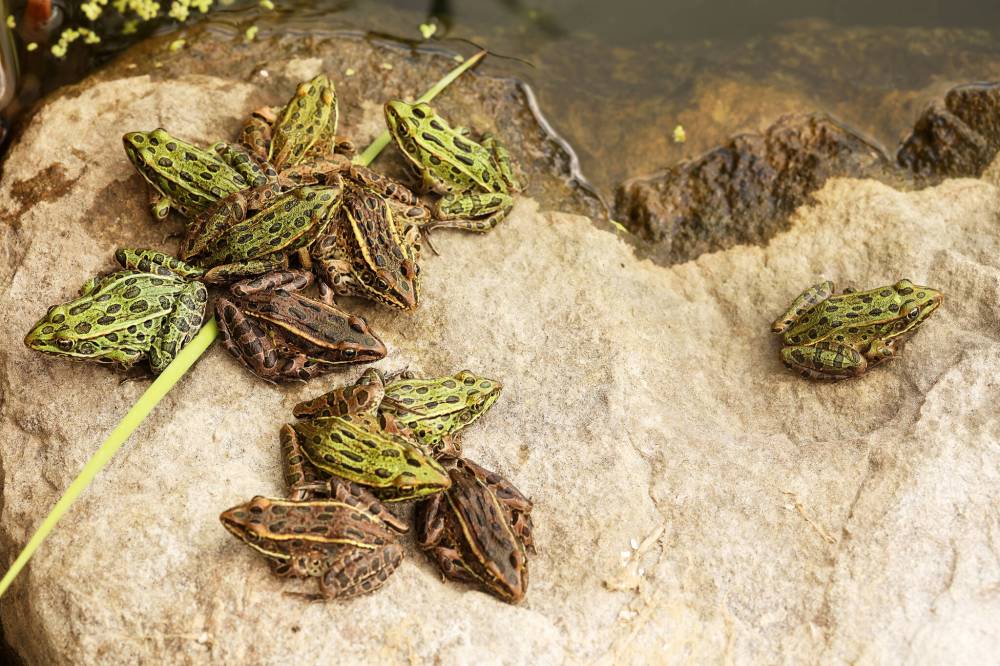Crucial choices to be made on biodiversity issue
Advertisement
Read this article for free:
or
Already have an account? Log in here »
We need your support!
Local journalism needs your support!
As we navigate through unprecedented times, our journalists are working harder than ever to bring you the latest local updates to keep you safe and informed.
Now, more than ever, we need your support.
Starting at $15.99 plus taxes every four weeks you can access your Brandon Sun online and full access to all content as it appears on our website.
Subscribe Nowor call circulation directly at (204) 727-0527.
Your pledge helps to ensure we provide the news that matters most to your community!
To continue reading, please subscribe:
Add Brandon Sun access to your Free Press subscription for only an additional
$1 for the first 4 weeks*
*Your next subscription payment will increase by $1.00 and you will be charged $20.00 plus GST for four weeks. After four weeks, your payment will increase to $24.00 plus GST every four weeks.
Read unlimited articles for free today:
or
Already have an account? Log in here »
Hey there, time traveller!
This article was published 05/01/2023 (1072 days ago), so information in it may no longer be current.
If you’re looking for a conversation starter with families and friends around the dinner table, you might set out the new accord to protect global biodiversity for them to chew on.
Now before your guests drop their forks and run for their coats, you need to explain why the new biodiversity framework hammered out by representatives of 196 countries belonging to the United Nations Convention on Biological Diversity in Montreal should be a meal-time conversation.
Signatories committed in early December to protect at least 30 per cent of the world’s biodiversity and to restore 30 per cent of the degraded ecosystems by 2030.

World leaders at the United Nations Convention on Biological Diversity committed in early December to protect at least 30 per cent of the world’s biodiversity and to restore 30 per cent of the degraded ecosystems by 2030. (File)
They also agreed that they would either phase out or reform $500 billion in agricultural and fishery-related subsidies that reduce biodiversity and that they would provide further incentives to employ more sustainable practices.
Accomplishing all that will have significant impact on how we do agriculture — which, of course, produces the food on our plates.
A UN report released last May said global biodiversity loss is accelerating, with more than one million species at risk of extinction. It ranked the drivers behind these declines. Changes in land and sea use topped the list, followed by species exploitation, climate change, pollution and invasive alien species.
That’s why this agreement matters to how we eat. Agriculture takes up 40 per cent of the Earth’s land base, consumes 70 per cent of its fresh water and produces up to 15 per cent of the global greenhouse gas emissions, according to Jack Bobo, director of global food and water policy at Nature United.
“Another 10 to 15 per cent comes from deforestation, 80 per cent of which is caused by agriculture,” he said in a talk to GrowCanada last month.
However, there’s a Jekyll and Hyde element to this story.
While agriculture is indeed placing pressure on the environment, productivity gains from using pesticides, fertilizer and better yielding genetics have resulted in less need for land that would otherwise have been.
“There are about 3.6 billion hectares of forest left on the planet. And if we were farming today with 1960s technology, we would need one billion hectares of additional land,” Bobo said. “It’s hard to see the forest that didn’t get cut down and to understand that agriculture is the single biggest driver of deforestation — and it is the single biggest protector of forest,” he said.
Nevertheless, when talk turns to the question of making agriculture more sustainable, we are often presented with an either-or choice.
Do we want farmers to pursue what is referred to as “sustainable intensification,” which sacrifices biodiversity on fewer acres to produce more food on less land?
Or do we want farmers to grow food less intensively by employing agroecological practices that preserve more biodiversity on the acres they farm?
Both scenarios are loaded with questionable assumptions.
We shouldn’t assume that more intensive farming will necessarily increase the negative environmental impact any more than we can assume employing more agroecological practices will automatically cause productivity declines and a push for more acres.
Farmers are continuously getting better at producing more with less. A healthy ecosystem is naturally more productive.
It’s also important to note that even if productivity gains keep pace with demand, agriculture will keep looking for more land. Because that’s what farmers do. They grow.
The world’s population is expected to peak and start to taper off as birth rates decline around mid-century. While the pressure to produce more food might ease, pressure is increasing to produce better, more nutritious, food. That implies a need for more diversity in the crops we grow.
What if farmers could grow more sustainably and less intensively while still producing enough to feed the world? Agroecology attracts a fraction of the research money spent on making pesticides work better, enhancing fertilizer efficiency and engineering better genetics. What if we invested in more diverse problem-solving?
And what if we put a stop to urban encroachment on our most productive lands?
Consider the after-dinner dainty tray. Those tasty morsels are cut into bite-sized pieces so you can have more than one.
» Laura Rance is vice-president of content for Glacier FarmMedia. She can be reached at lrance@farmmedia.com
